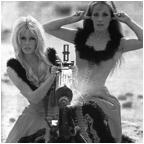
Viva Maria, 1965
A Few Elements for Another Vision: Of the Baader Meinhof / Red Army Faction Story
This October, some will celebrate the 30th anniversary of the “German Autumn”. Newspapers and TV will feed the audience with spotless archives and testimonies of the witnesses to these events. But what will they celebrate, really? The final and bloody stage of a revolutionary hope born in 1967-1968? Sad Birthday. Here is a short list of events around a different, and cinematographic, vision of the story.

Viva Maria, 1965
Viva Maria, directed by Louis Malle was one of the favorite movies of the members of the RAF. Brigitte Bardot and Jeanne Moreau are the perfect icons of revolutionary romanticism.
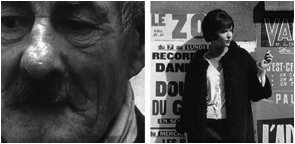
Oskar Langerfeld 12X, 1967 | Vivre Sa Vie, 1962
Oskar Langerfeld 12X (1967) was Holger Meins’ first short movie, a documentary about a homeless man in Berlin. The construction of this movie in 12 chapters is a tribute to Jean-Luc Godard’s Vivre Sa Vie. In 1968, Holger Meins directed a premonitory short movie, Making a Molotov Cocktail.
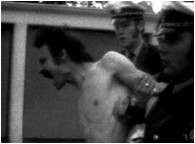
Holger Meins
Holger Meins first thought that cinema could help change the world. But after some years in the political and artistic life of Berlin, he felt that to be a political filmmaker would not help the revolution and that movies, even created as weapons against capitalism, were merely innocent toys. After some last super8 prints shot at the beginning of the RAF movement, he changed his camera for real weapons.
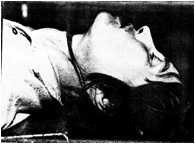
Ulrike Meinhof
In 1976, Ulrike was discovered hanged in her cell. Few people believed in this strange ‘suicide’ – she was found dead with sperm in her underpants. Only the photographs of her dead body could destroy the memory of this determined and influential woman.
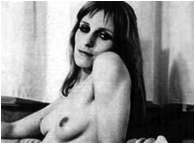
Gudrun Ensslin
In 1967, a picture of Gudrun Ensslin smiling tenderly in a picture extracted from Das Abonnement, a movie that is supposed to be an experimental pornographic movie.
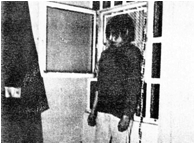
Gudrun Ensslin hanged
1977, a picture of Gudrun hanged in her cell. She put a cover on to hide her supposed suicide and also to hide her corpse. But who could see her dead body in this empty cell? Germany in Autumn is a collective movie, an artistic reaction to the period. This masterpiece gives a kaleidoscopic and complex vision about what happened a few weeks after October 1977. The most impressive movie about the RAF.
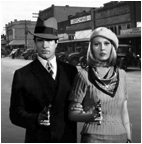
Bonnie and Clyde, 1967
Bonnie and Clyde were the private nicknames of Gudrun Ensslin and Andreas Baader. Violence, runaways and love.
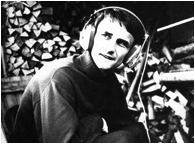
Holger Meins
From 1966, Holger Meins studied at the Berlin School of Cinema. With his fellow students Harun Farocki, Helge Sander and Hartmut Bitomsky, they made films and revolutions.
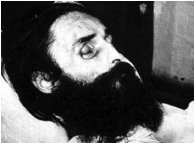
The corpse of Holger Meins
In 1974, in a prison, he died from a hunger strike. The pictures of his body were held up in demonstrations in the days following his death. How hard was it to stand the sight of a skinny corpse at that time in Germany?
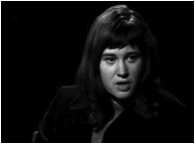
Ulrike Meinhof
Ulrike Meinhof was a respected journalist and a spokeswoman of the leftwing opposition in the 1960s. Influential in West Germany, she wrote numerous articles for many papers and she often appeared on TV to defend the opposition. Hoping to be useful to the revolution, she started to work as TV journalist at the end of the ’60s. She made reports about poor workers and the inequality of women.
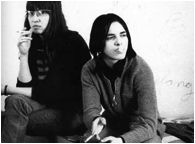
Bambule, 1969
In 1969, she directed Bambule, a TV drama about young girls in boarding schools, with real characters. But this movie wasn’t broadcast, as Ulrike had participated in the creation of the RAF.
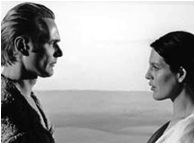
Germany in Autumn, 1978 (section directed by Volker Schlöndorff)
Schlöndorff’s movie shows a discussion about a TV drama based on Antigone, who appeared for some of the panelists as a terrorist.
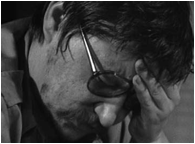
Rainer Werner Fassbinder in Germany in Autumn, 1978
On the night of the hijacking in Mogadishu, Fassbinder, listening to the events as they were related on the radio, made a filmed self-portrait of himself as he heard of the death of the leading members of the RAF, including Andreas Baader, whom he had known from childhood. He edited it along with a strong discussion with his own mother.
Alexander Kluge’s documentary shows the double burial, within a few days and in the same city, of Hans-Martin Schleyer on one side, and Baader, Ensslin and Rapse on the other side. Two funerals, two societies living in a field of contradictions.
The last image, of a woman and her child walking along the road, leaves us without any answer about what happened. Only a feeling of emptiness. Not only the end of the RAF, but the end of a time when dreaming of a revolution was possible.
And… The Lost Honour of Katharina Blum Volker Schlöndorff’s masterpiece, based on the novel by Heinrich Böll, Gerhard Richter’s series of paintings October 18,1977, all of Harun Farocki’s movies, In Girum Imus Nocte et Consumimur Igni by Guy Debord, The Third Generation and Mama Kuster's Trip to Heaven by Fassbinder, La Chinoise by Jean-Luc Godard, Yvonne Rainer’s Journeys from Berlin 1971, Schlöndorff’s Legend of Rita, Starbuck-Holger Meins by Gerd Conradt, Marianne and Julianne by Margerethe von Trotta, Ulrike Marie Meinhof, a Letter to His Daughter by Timon Koulmasis and Stammhein by Reinhard Hauff.
(Jean-Gabriel Periot is a major found-footage, short/essay filmmaker. His work has featured in hundreds of festivals worldwide and his Dies Irae, a journey across the planet and the last century, is, in my opinion, the greatest short film of this century. He is nominated for the 2007 animate! artists’ award and will show his work in London on 29th November at Whitechapel Art Gallery.)
By Jean-Gabriel Pérlot
Vertigo Volume 3, Issue 7, Autumn 2007